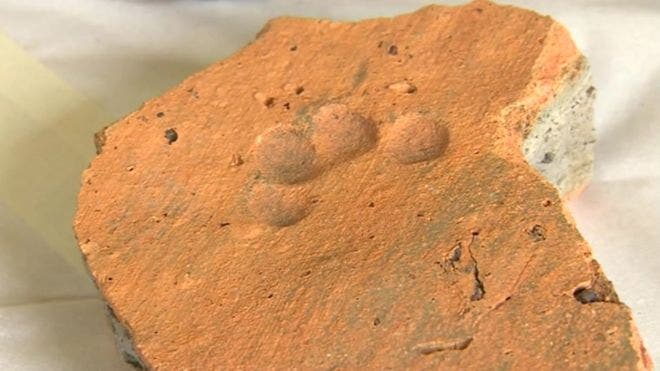Cats — not giving a damn about your work since the dawn of time.

Don’t you just hate it when you work hard for something and someone just walks over your work — literally? Well, we don’t really know how any Romans would feel after a cat walked over their roof tiles, but now, after almost two millennia, it’s nothing but cute.
The tile dates from 100 AD, from a Roman site in Lincolnshire, UK. Archaeologists found it along with over one thousand other pieces, by the Washingborough Road site, excavated due to railway works in the area. Scientists believe that the site was a complex of buildings, perhaps a town or a smaller settlement, which included some pretty wealthy people. Most houses during that time would have been built of timber and thatch. This is also likely because many of the buildings excavated there were made of stone and bricks and had tiled roofs — indicating some pretty wealthy Romans lived in the area. This was likely part of a big villa, as archaeologists even found a fish pound around.
The tiles were made through a relatively common technique. Most craftsmen would have made the tiles close to the settlement. The wet clay was molded into the desired shape and then left out to dry — it’s then that our cat would have stepped on it, sinking ever so slightly into the drying clay and leaving a print that would live on for posterity.
It’s known that Romans kept cats as pets, mostly to keep the mice and rats away.
Cat leaves purr-fect paw print in 2,000-year-old tile unearthed in Lincolnhttps://t.co/MFYOABjiJo
— Lincolnshire Live (@LincsLive) June 1, 2017
It’s not unprecedented to find animal prints on Roman tiles, though cat prints are particularly rare.
“Dog paw prints, people’s boot prints and even a piglet’s trotter print have all been found on tiles from Roman Gloucester, but cat prints are very rare,” Lise Noakes of the Gloucester City Council tells the BBC.
Aside from Roman artifacts, the site has revealed a trove of other findings. Flints from hunter-gatherers, arrows and other weapons from Neolithic hunters, Bronze-Age burial urns, even human ashes were all retrieved from the area, which seems to have been continuously inhabited for a very long time. Moving on closer to the present date, archaeologists have also discovered a Medieval malthouse and pre-modern farmhouse. Still, if you ask me, nothing quite compares to the charm of this small paw print.
Was this helpful?



